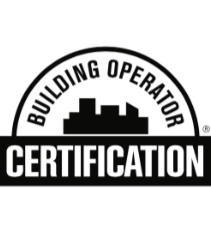A Montana Facilities Manager Puts Innovation to Work for a Hospital.
A Montana Facilities Manager Puts Innovation to Work for a Hospital.
This may go without saying, but it gets somewhat cold in Plains, Montana. This small community, about an hour northwest of Missoula, Montana, often sees single digits or below in the winter, with 4-foot snowdrifts not uncommon. In contrast, summer temperatures can soar into the triple digits.
Dealing with the climate was just another part of the job for Dennis Bursell, who recently retired from overseeing facilities and maintenance at Plains’ Clark Fork Valley Hospital, a 16-bed Critical Access facility and 28-bed Long-Term Care facility.
“Patient comfort is number one,” Dennis said. “Most people are sick when they come here, so if it’s too cold, they’re not happy. The patients come first.”
But heating the building to maintain patient comfort was having an impact on operating costs: The hospital was reliant on propane and fluctuations in its price caused strain in the budget. Transportation of that propane was also a factor, Dennis said, since the area has no natural gas of its own.
Another complication was the nature of the facility itself.
“When they built the hospital, they took the surgery department and made it the set point,” Dennis said. “We have to cool the air to 68 or 67 degrees for surgery for the doctors because that’s where they like it, and then we have to heat it back up to put it back in the building. And that’s summer and winter.”
Turning to renewable fuel
The facility needed a new, innovative solution for the hospital’s energy and Dennis and his team found it: a wood-fired pellet boiler. “We’re saving $9 an hour staying off propane,” Dennis said.
As for the cumulative savings so far? “Well, that’s 24/7, so I’d have to get a calculator out,” he said, laughing, “but it’s big savings.” (Current estimates are around $35,000 per year, compared to propane, but of course this fluctuates somewhat with the price of propane.)
Dennis credits his Building Operator Certification (BOC) training for helping him see this possibility. He earned Level 1 Certification in 2011. “I didn’t know that was out there before I went to this class,” he said.
Using the BOC network
It wasn’t just awareness that he gained during BOC training, though. Real-world information about how to put the pellet boiler into practice came, too.
“The quality of the pellet is utmost, the most important thing,” he said he quickly discovered by speaking with other experts. He has since passed his learning along, counseling multiple colleagues about how to install and get the most out of their own pellet boiler systems. Dennis advises them to source high-quality fuel and avoid the dreaded “clinkers” – sand and burned wood with the consistency of rock and the potential to break an auger, taking a boiler out of commission.
Dennis credits his BOC certification not only for upgrading his knowledge but also for providing the network of support that came along with the training. Graduates commonly help one another with problems and ideas, whether they are dodging clinkers or repairing actuators.
“When you can send a mass email out and somebody’s already encountered that problem some place in the United States, and they say, ‘Here’s what we did to fix it,’ that’s worth its weight,” he said. “I mean, that is really good.”
About BOC™
Building Operator Certification (BOC) is a nationally recognized, competency-based training program for building operators. The program teaches participants how to make a building more comfortable and efficient by making its systems work better together.
Cost of Project
$355,000 (-$144,000 covered by grants and alternative funding)
Average Annual Savings
$35,000 (more in years when propane costs rise)
Next Project Underway
Second HVAC system for hospital, allowing multiple setpoints to reduce energy use and increase comfort
Learn more at www.theboc.info



